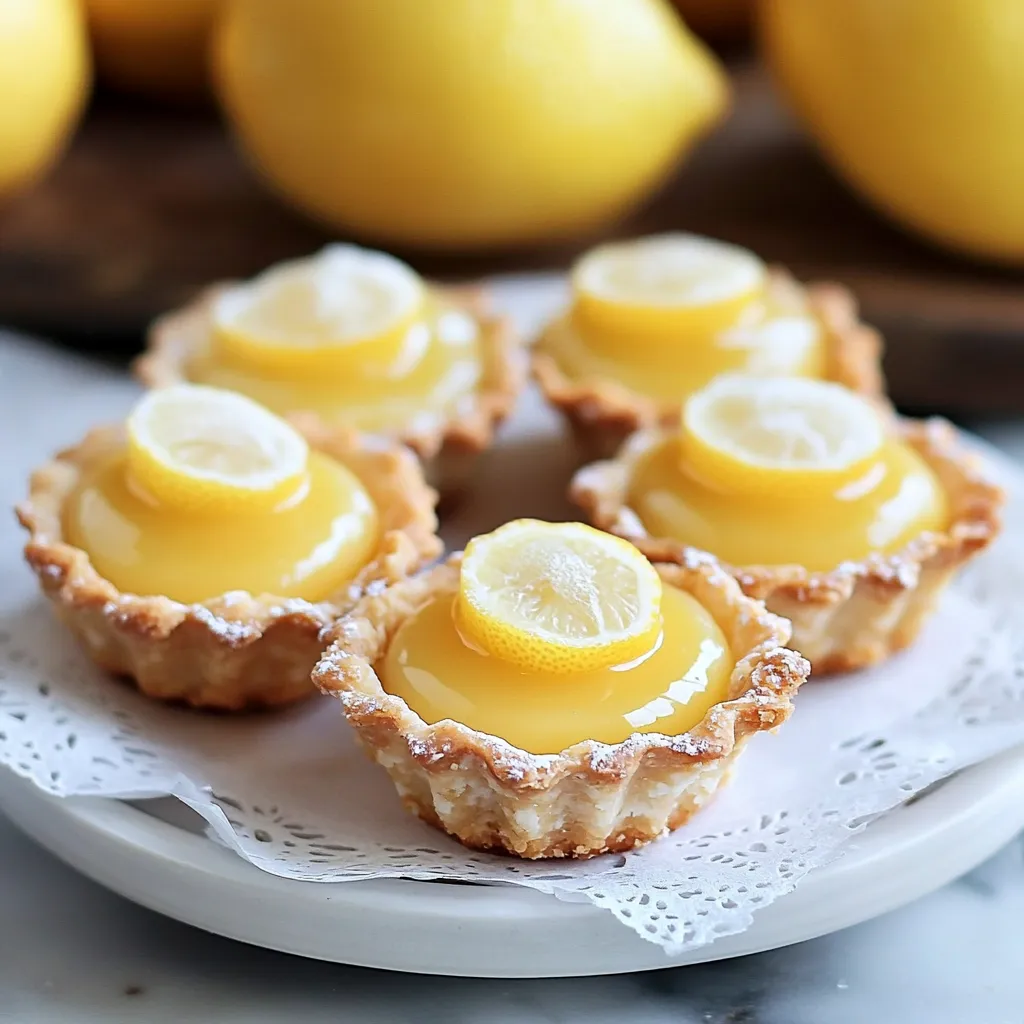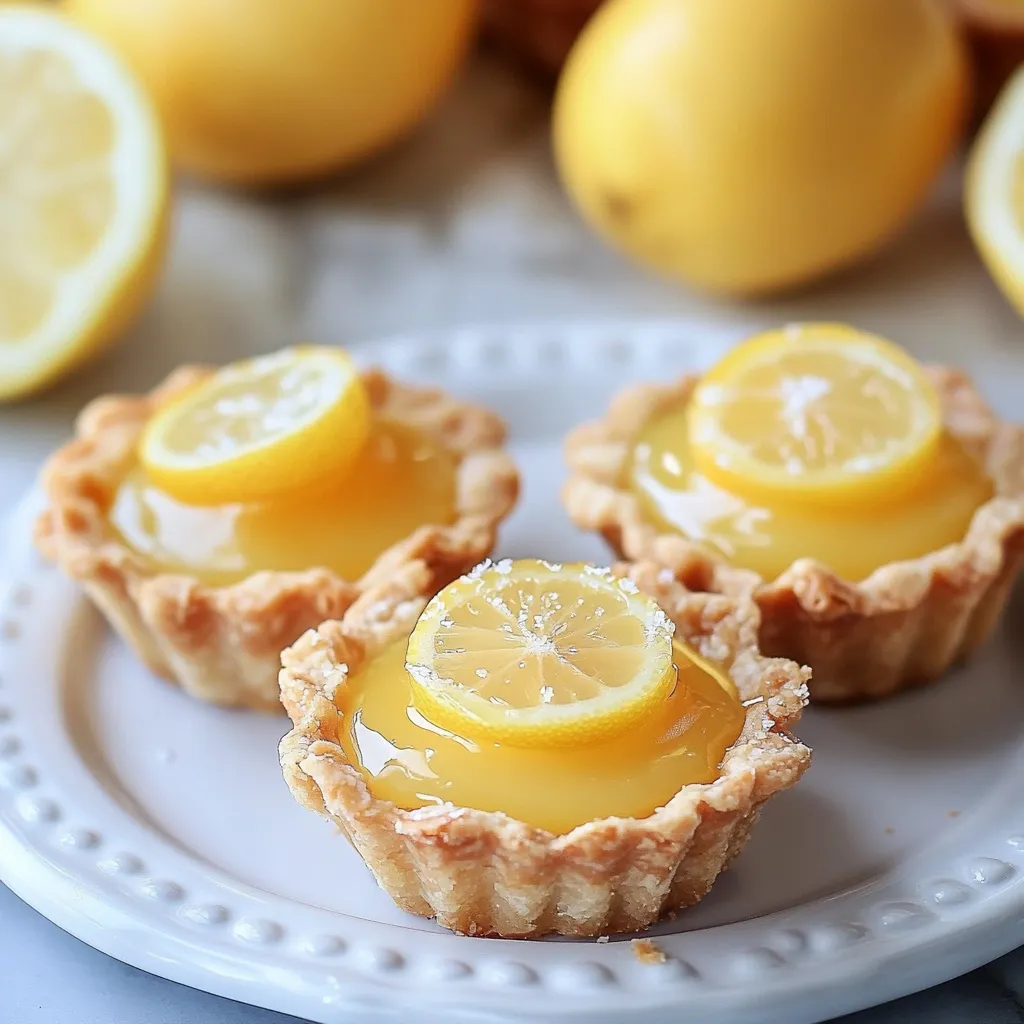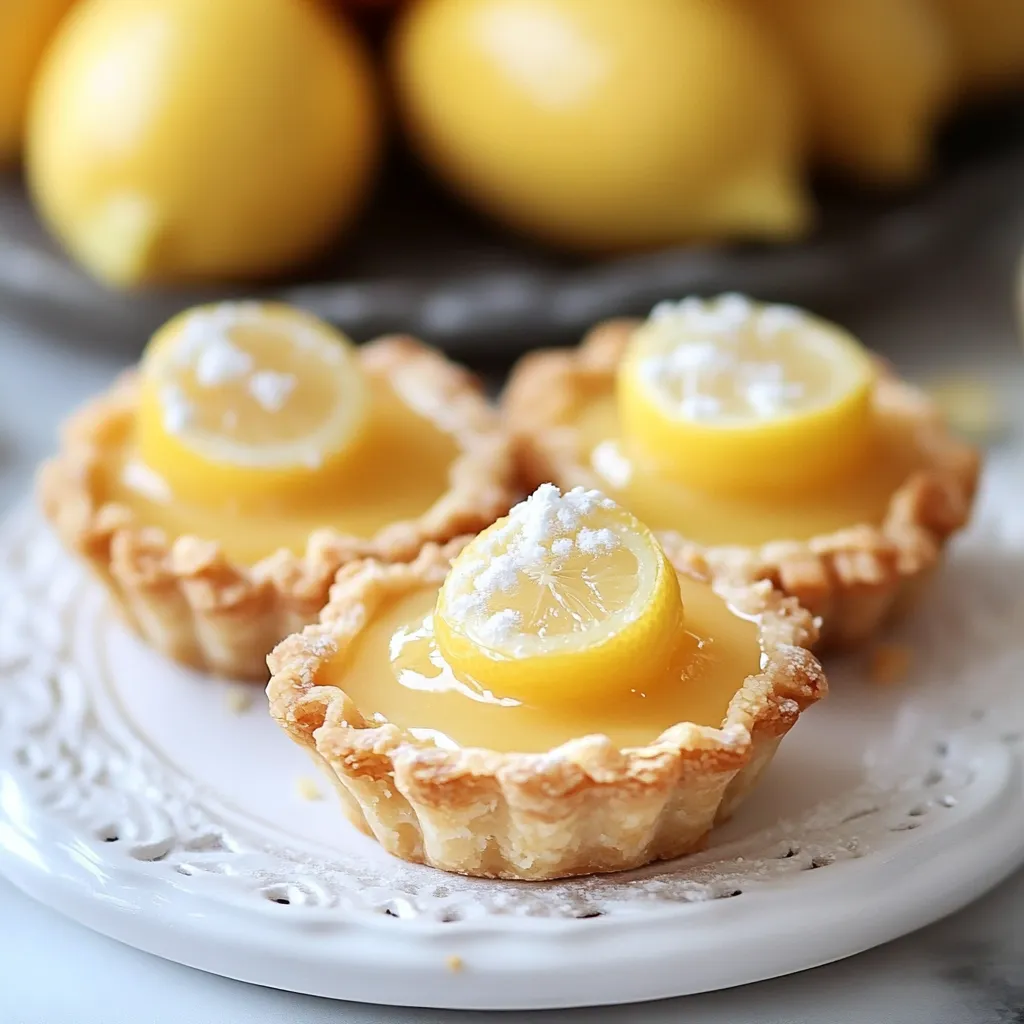 Pin it
Pin it
This bright and zesty lemon curd tartlet recipe has become my Easter tradition, offering the perfect balance of buttery pastry and tangy citrus filling. These miniature treats bring sunshine to any spring celebration with their vibrant color and refreshing flavor.
I first made these tartlets for an Easter brunch when I was determined to move beyond traditional carrot cake. The bright yellow filling immediately evoked spring sunshine, and they've become a requested favorite at every gathering since.
Ingredients
- All purpose flour: Provides structure but keeps the pastry tender
- Cold unsalted butter: Creates those essential flaky layers in the crust
- Powdered sugar: Adds sweetness without making the dough tough
- Egg yolk: Enriches the dough and helps bind everything together
- Fresh lemon juice: Gives that signature tang nothing bottled compares
- Lemon zest: Contains essential oils that intensify the citrus flavor
- Granulated sugar: Balances the acidity while helping the curd set properly
- Whole eggs: Provide both structure and richness to the lemon filling
Step-by-Step Instructions
- Make the pastry dough:
- Combine flour, powdered sugar and cold butter in a food processor with quick pulses until the mixture looks like coarse breadcrumbs. This should take about 10 pulses. Add the egg yolk and cold water gradually, pulsing just until the dough starts coming together. The key is avoiding overmixing which creates a tough crust.
- Chill the dough:
- Turn the dough onto a lightly floured surface and gently form into a disc about 1 inch thick without overworking it. Wrap tightly in plastic and refrigerate for at least 30 minutes. This relaxes the gluten and firms up the butter, essential for a flaky texture.
- Roll and shape:
- Preheat your oven while rolling the chilled dough to approximately 1/8 inch thickness. Use a round cutter that's about 1 inch larger than your tartlet pans. Gently press the dough circles into the pans, ensuring they sit snugly in the corners without stretching.
- Blind bake:
- Prick the bases several times with a fork to prevent bubbling. Line each with small pieces of parchment and fill with baking beans or uncooked rice. Bake at 350°F for 12 minutes, then remove the weights and bake another 5 minutes until the pastry is golden and crisp.
- Create the lemon curd:
- Set up a double boiler with simmering not boiling water. Whisk lemon juice, zest, sugar and eggs in a heatproof bowl placed over the saucepan. Keep whisking constantly for 10 12 minutes as the mixture gradually thickens to a custard consistency that coats the back of a spoon.
- Finish the curd:
- Remove from heat once thickened and immediately add the butter pieces, stirring until completely melted and incorporated. The residual heat will melt the butter while stopping the cooking process at the perfect point.
- Assemble and chill:
- Pour the warm lemon curd into the cooled pastry shells, filling them just below the rim. Refrigerate for at least one hour or overnight until fully set. The curd will continue to thicken as it chills.
 Pin it
Pin it
My secret to the most intensely flavored lemon curd is using Meyer lemons when they're in season. Their slightly sweeter, more complex flavor creates a filling that makes people close their eyes with pleasure at the first bite. My grandmother always said the perfect lemon dessert should make your mouth water before you taste it.
Storage and Make-Ahead Tips
These tartlets keep beautifully in the refrigerator for up to 3 days when stored in an airtight container. The pastry may soften slightly over time but remains delicious. For longer storage, you can freeze the baked unfilled tart shells for up to a month. The lemon curd can also be made separately and refrigerated for up to a week before assembling.
Easy Variations
While classic lemon curd is perfection on its own, this recipe welcomes creative adaptations. Try adding a tablespoon of lavender buds to the sugar before mixing for a floral note, or substitute lime or blood orange juice for part of the lemon juice. For a subtle complexity, a tablespoon of limoncello or Grand Marnier folded into the finished curd adds sophisticated depth.
Serving Suggestions
These tartlets shine when served slightly chilled but not cold from the refrigerator. Allow them to sit at room temperature for 15 minutes before serving to let the flavors fully bloom. For a picture perfect presentation, top with fresh berries, a small dollop of lightly sweetened whipped cream, or a sprig of mint. During Easter celebrations, a few edible flowers or a sprinkle of pastel colored sugar creates a festive touch.
 Pin it
Pin it
These tartlets are a burst of sunshine in every bite, bringing joy to any occasion.
Frequently Asked Questions
- → Can I make these lemon curd tartlets ahead of time?
Yes! You can make these tartlets up to 2 days in advance. Store them covered in the refrigerator, and add any fresh toppings like berries just before serving.
- → How do I know when my lemon curd is properly thickened?
The lemon curd is ready when it coats the back of a spoon and holds a line when you run your finger through it. It should be thick enough to pour slowly, similar to the consistency of warm pudding.
- → Can I freeze these tartlets?
While you can freeze the baked pastry shells for up to a month, the assembled tartlets with lemon curd don't freeze well as the texture of the curd can become grainy when thawed. It's best to enjoy them fresh.
- → What if I don't have a tartlet pan?
You can use a regular muffin tin as an alternative. Simply line the cups with strips of parchment paper (to help lift the tartlets out later) before pressing in your pastry dough.
- → How can I prevent my pastry from shrinking while baking?
Make sure to chill the dough for at least 30 minutes before rolling, and again for 15 minutes after fitting it into the tart pans. Using pie weights or baking beans during the initial bake also helps maintain the shape.
- → What are some variations I can try with these tartlets?
Try adding a thin layer of raspberry jam beneath the lemon curd, or fold in some blueberries to the curd while it's still warm. You could also top with meringue and briefly torch for lemon meringue tartlets.
